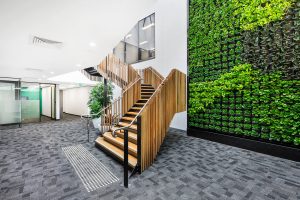Can noise be addressed in layouts accommodate different ways of working?
By the powerhouse group projects team
Baffled by baffling? There are other ways to accommodate those that need to work in a quiet environment other than ordering vast shipments of sound-proofing. Working hard to gain a crystal-clear understanding of what and how various functions achieve and interact within their business units is critical to developing designs ideas that sound perfect.
Activity-based work environments and their various forms are popular because they connote freedom, independence and trust, while placing a premium on the “what” as opposed to the “where”. That is to say, we know what we want our employees/associates/contractors/team members to achieve and how but where they fulfill the requirements of the role or project is largely up to them. A sit-stand desk with a view towards the city? Great, it’s yours. Prefer to work through contract amendments in the solitude of a secluded cubicle/desk space? Book it, it’s yours. Informal meetings spent working through sales funnels over coffee while perched on bar stools? It’s up to you.
You can see why this style ticks so many boxes but what can be done if a whole department or even business thrives on near silence? It happens. Less so nowadays but it happens. A departure gate style bin filled with noise cancelling headsets could be an answer. It’s not the best answer but we’re sure it’s been considered as has a 1960-70’s style rabbit warren of offices, an intricate network of isolation. We can do better than that.
Given the opportunity to discuss specific and general needs with various clients, we can present a number of options that integrate the need to collaborate, even if only in passing, with the need for privacy. As much as we all like the idea of open meeting areas (because they are terrific for the free-flow of information) there are times when commercially-sensitive information needs to remain well… commercially-sensitive. In addition, departments such as research & development teams may have to use specialist equipment, the noises from which may disrupt or obliterate the possibility of normal healthy discussion.
The key to managing noise is to listen
While it may be helpful, clients (and us for that matter) don’t have noise management engineers on standby to understand unique requirements. Yes, an understanding helps immensely and access to specialist knowledge is valuable in cases where noise attenuation methodology is critical. That said, oftentimes the asking and answering of critical questions provide information about the business, frank answers and then the expertise and experience that comes as standard with all powerhouse house consultations. More than enough.
To talk about your layout, noise management and work style needs, take the opportunity to talk with us. We’re listening.




